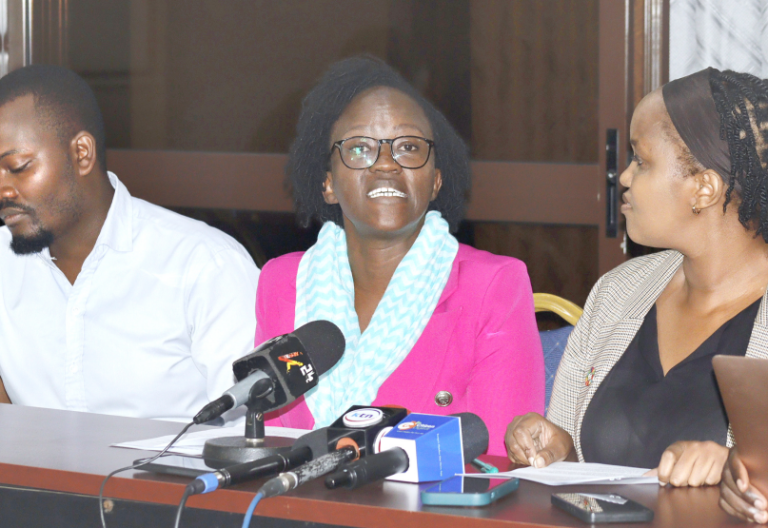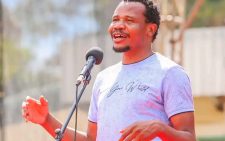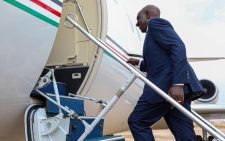Budget: Millions of learners could be ‘locked out’

Civil society organisations in the education sector yesterday raised a red flag over budget gaps that threaten to lock out over one million learners from school, even as Parliament closed the window for public participation yesterday.
By last evening, the groups were hoping Parliament would adopt a raft of proposals, most advocating for greater education funding, a conducive learning environment, improved learner welfare and prudent use of allocated resources.
In the Budget Policy Statement (BPS) for the 2025-2026 financial year, education has been allocated an estimated Sh656.6 billion. However, organisations united under the Elimu Bora Working Group lamented that much of this money is not used for its intended purposes.
Public participation
“As Kenya’s Parliament closes the window for public participation through submission of memoranda and public hearings on Tuesday, 20 May 2025, the BPS and Budget Estimates point at a disheartening situation to the public education sector,” said Jennifer Kaberi, founder and director of Mtoto News, a digital platform that uses technology to make children visible.
The groups addressed journalists in Nairobi where they scrutinised the Budget Policy Statement, analysing problematic areas in the national budget, with a focus on child protection and education.
The budget, “long expected to be a facilitator for inclusive quality education has been turned into an inhibitor to access of the right to education for millions of children and youth”, the organisations lamented.
From low capitation to lack of clean water and sanitation services and diminishing funding for school meals, the groups expressed concern that millions of children remain out of school and need to be brought back.
They noted that while the 2025 Economic Survey indicates 8.2 million learners were in primary schools in 2024, the FY2025/2026 budget estimates target only 6.97 million, implying that 1.3 million are not factored into the budget.
“The number of learners in primary, junior and secondary schools as credibly documented in the Economic Survey 2025 should be used as the basis for budgeting,” Kaberi argued.
Inadequate funding
Efforts must similarly be made to bring to school more than 2.5 million children who, according to UNESCO, were not in school in 2024, said Rosebella Njeje, head of learning and development at Mtoto News.
Similarly, reports from Save the Children and UNICEF estimate 3.5 million as the actual number of out-of-school children.
Under the recurrent vote for free primary education, there is an allocation of Sh12.78 billion. However, the organisations contend this money is inadequate and urged Parliament to consider allocating Sh41 billion for free primary education capitation at the rate of Sh5,000 per learner annually for 8.2 million learners.
“Even in technical vocational education and training institutions, there is no clarity on capitation for learners, including for the learners who are expected to benefit from the capitation of TVET Institutions,” Njeje said, calling on Parliament to clarify whether there is indeed any capitation for students in TVET institutions.
In the BPS, there is an allocation of Sh41.5 billion for the TVET programme, an increase of Sh7 billion from the Sh34.5 billion in 2024/2025. The specific sub-programmes include technical accreditation and quality assurance, technical trainers and instructor services, special needs in technical and vocational education, and infrastructure development and expansion.
However, there are no specific targets demonstrating whether any capitation will be sent directly to TVET institutions.
The organisations also identified several areas where young learners have been excluded, including in the budgeting process, public participation, and care reforms.
‘Lack of clarity’
Atulo Joseph, the head of platforms at Mtoto News, noted that while the social welfare and social development departments have been merged in the same budget, there are discrepancies and lack of clarity.
He pushed for the creation of a department and programme this year so that by next year there would be a budget allocation for child participation.
“So we are requesting a department on child participation and ending violence against children,” he said, noting its importance because the government has been making commitments without showing tangible results for its pledges.
The government has also committed to ending violence against children. However, according to Atulo, there is a lack of concerted efforts to ensure this goal is achieved.
“Therefore, if we can have a programme, a department with funding, with human resources, specifically for any violence, we are going to see an end to violence,” he added.
Njeje said one of the biggest gaps in the current budget is that indicators are not aligned.
“So the budget is not clear; the indicator is not available, and therefore, this begs for a question on how to budget for something that is not available in the budget?” she said.
Clearer allocations
The groups called for a review of the current budget indicators and recommended reallocations to the Directorate of Children’s Services, arguing that they need the funds more to run activities before the Care Support Fund is put to effect.
“The directorate needs the money to enable them to rescue children,” she said.
The Elimu Bora Working Group called for the establishment of a clear programme and budget vote for junior and senior schools in the budget, and for the government to demonstrate with clarity the budget allocation for the schools in the same manner that there is clarity on budget allocation for primary schools.









